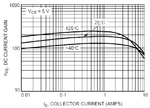Audioguru
Advanced Member level 7

- Joined
- Jan 19, 2008
- Messages
- 9,461
- Helped
- 2,152
- Reputation
- 4,304
- Reaction score
- 2,011
- Trophy points
- 1,393
- Location
- Toronto area of Canada
- Activity points
- 59,764
The new transistors are better than the original transistors and will survive the higher battery voltage and current.
BUT their case is different and they might not fit.
BUT their case is different and they might not fit.


